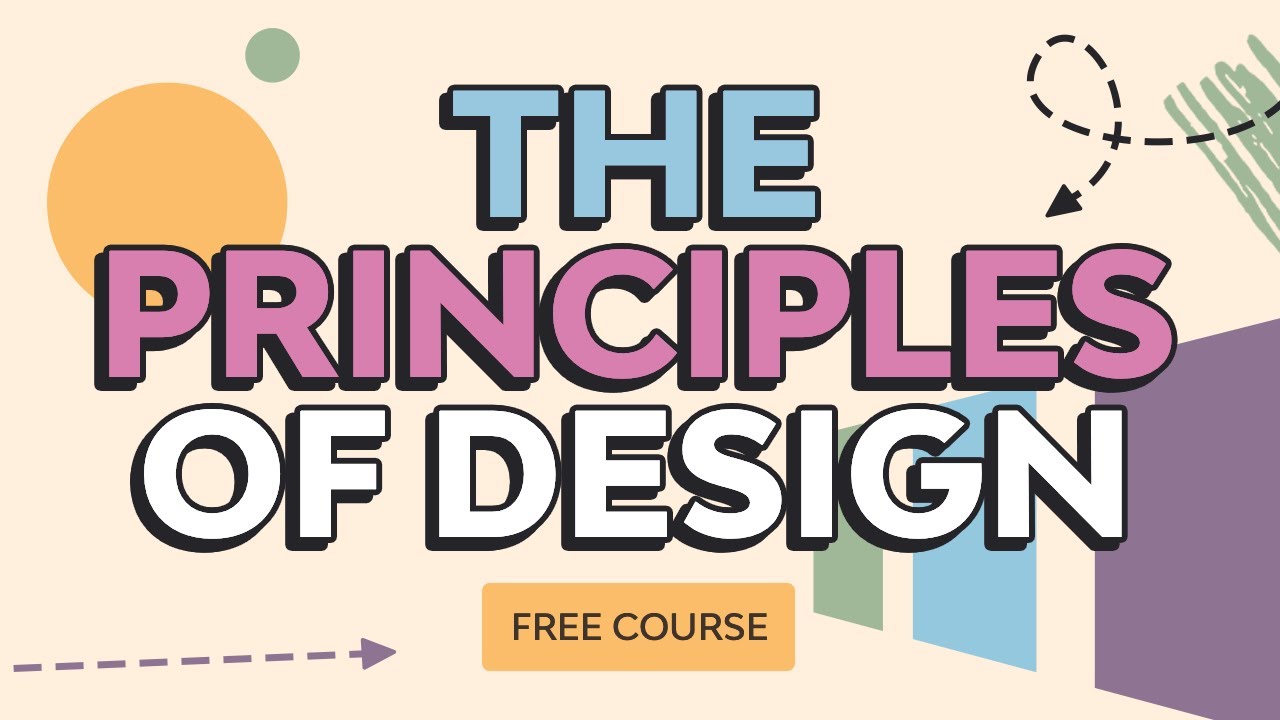PRINSIP DASAR DESAIN DAN KOMUNIKASI YANG WAJIB KALIAN KETAHUI
Summary
TLDRIn this video, the speaker discusses the essential design principles every designer must know, including Unity, Balance, Rhythm, Contrast, Proportion, Space, Clarity, Simplicity, and Composition. These principles are vital for creating visually harmonious and effective designs. The speaker explains how each principle contributes to the overall structure and aesthetic of a design, from ensuring consistency and balance to optimizing space and clarity. The video emphasizes the importance of understanding these principles to successfully meet the needs of the audience and communicate messages effectively through design.
Takeaways
- 😀 Design is not easy; a designer must understand the needs and preferences of the target audience.
- 😀 Design involves both technical and artistic elements, originating from architecture and evolving into graphic design.
- 😀 Unity in design ensures all elements work together harmoniously, creating a balanced composition.
- 😀 Balance is important in design to ensure visual comfort and equal distribution of elements, both horizontally and vertically.
- 😀 Rhythm in design refers to the repetition or variation of elements, guiding the viewer's eye across the design.
- 😀 Contrast is created through differences in color, size, shape, or other design elements, making certain aspects stand out.
- 😀 Proportion refers to the relationship in size between design elements, helping to maintain visual harmony.
- 😀 Space is crucial in design, including both positive (filled) and negative (empty) spaces, to avoid clutter or emptiness.
- 😀 Clarity in design is essential, ensuring the design is easy to understand and communicates its message clearly.
- 😀 Simplicity is a key principle, as effective design often communicates its message with minimal and straightforward elements.
Q & A
What is the definition of design according to the script?
-Design is described as a framework, shape, plan, modification, and mindset. It is also seen as applied art and architecture, often involving creativity and various artistic achievements. The term design originally came from technical drawings in architecture and evolved into graphic design.
Why is it important for a designer to understand the principles of design?
-Understanding the principles of design is crucial because it helps designers create effective and visually appealing work. It enables designers to align with the target audience's preferences and ensures that designs are balanced, clear, and engaging.
What does 'Unity' mean in design, and why is it important?
-'Unity' refers to the cohesiveness of the design elements. It ensures that all elements work together harmoniously, creating a well-organized and consistent composition. It is important because it helps maintain the visual flow and balance of a design.
How does 'Balance' impact the visual comfort of a design?
-Balance ensures that the visual weight of elements in a design is evenly distributed, both horizontally and vertically. This creates a sense of stability and comfort for the viewer, preventing the design from feeling lopsided or overwhelming.
What is 'Rhythm' in design, and how does it function?
-Rhythm in design refers to the repetition or variation of design elements in a regular, consistent pattern. It functions by guiding the viewer's eye through the design, similar to how rhythm works in music or nature, creating a dynamic and engaging visual flow.
What are examples of contrast in design?
-Contrast can be created through differences in color, size, shape, and other design elements. For example, using dark and light colors together can highlight important elements, making them stand out and drawing the viewer's attention.
What is the role of 'Proportion' in design?
-Proportion refers to the relative size and scale of elements within a design. It helps ensure that elements are well-balanced and that their sizes are appropriate in relation to one another, contributing to the overall harmony of the design.
What are positive and negative space in design?
-Positive space is the area filled with elements, while negative space refers to the empty space around and between those elements. Both are important in creating a balanced design, ensuring that the composition is neither too crowded nor too sparse.
Why is clarity important in design?
-Clarity ensures that the design is easy to understand and does not confuse the viewer. It is essential for effectively conveying the intended message and ensuring that the audience can quickly interpret the design.
What is meant by 'Simplicity' in design?
-Simplicity in design means focusing on essential elements and avoiding unnecessary complexity. It helps convey the message in a direct, clear, and impactful way, making the design more accessible and engaging.
Outlines

هذا القسم متوفر فقط للمشتركين. يرجى الترقية للوصول إلى هذه الميزة.
قم بالترقية الآنMindmap

هذا القسم متوفر فقط للمشتركين. يرجى الترقية للوصول إلى هذه الميزة.
قم بالترقية الآنKeywords

هذا القسم متوفر فقط للمشتركين. يرجى الترقية للوصول إلى هذه الميزة.
قم بالترقية الآنHighlights

هذا القسم متوفر فقط للمشتركين. يرجى الترقية للوصول إلى هذه الميزة.
قم بالترقية الآنTranscripts

هذا القسم متوفر فقط للمشتركين. يرجى الترقية للوصول إلى هذه الميزة.
قم بالترقية الآن5.0 / 5 (0 votes)






